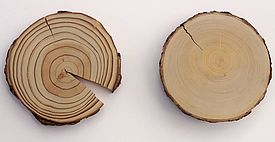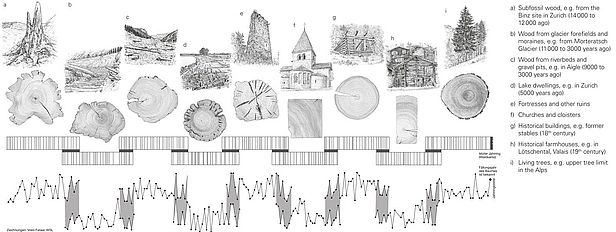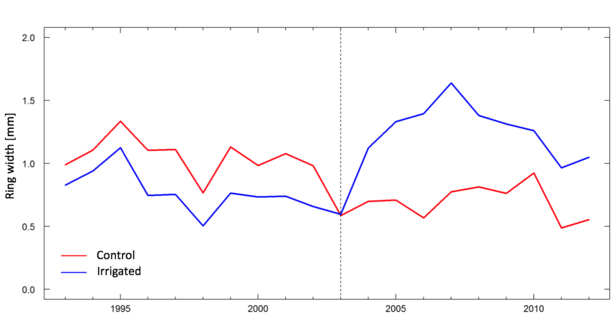Tree-ring width depends on many factors at the site a tree is growing (fig. 1). Dendrochronology examines tree growth and its spatial and temporal relationships to the environment. In order to correctly assign tree rings to calendar years, we compare characteristic sequences of ring widths with sequences of known age (fig. 2). This basic principle of tree-ring research is known as crossdating.
We use discs or cores for tree-ring analysis. Cores can be sampled without damaging the tree. After sanding samples on a belt grinder, we measure the tree-ring widths under a stereo microscope with the help of a moving measuring table connected to a computer. We then date them accurately to the year with special software.
Aims of the measurements ¶
Environmental conditions can be reconstructed using tree-ring analysis. Conversely, annual rings also show how tree growth reacted to certain environmental conditions such as drought (Fig. 3).
Tree-ring analyses are also used to estimate the carbon storage capacity of forests. Tree rings allow detailed conclusions on forest productivity or on the influence of natural disturbances and hazards.
In addition, more detailed statements on mechanisms and timing can often be obtained by analysing the chemical composition (isotopes) and the anatomical properties of the wood cells.


